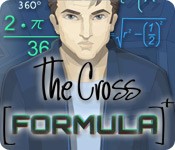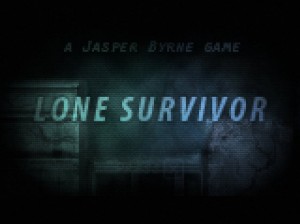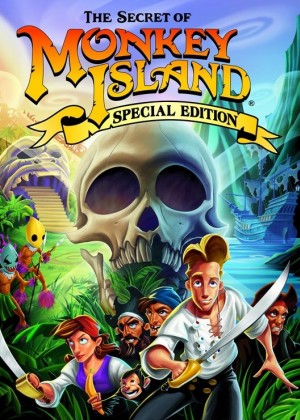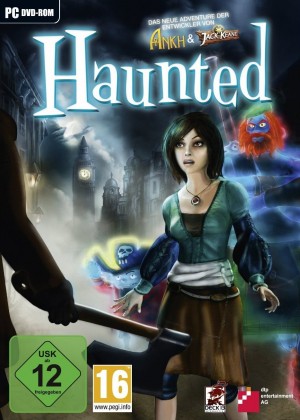Secret Files 3 - Steffen Schamberger and Marco Zeugner interview - page 2
It's been three years since we last saw Nina Kalenkov and Max Gruber. After solving the century-old mystery of the Tunguska explosion, then saving the world from a climatic apocalypse, the pair have finally earned some time to rest and enjoy each other's company... at least until an armed SWAT team barges into their apartment and drags Max away. So much for relaxing. But gamers wouldn't have it any other way, as that means there's another mystery to be solved, the fate of the globe once more at stake. With Secret Files 3 heading into the home stretch, we caught up with the game's Producer, Steffen Schamberger from Deep Silver, and Project Leader Marco Zeugner from Animation Arts to reveal some early secrets about the new game
Adventure Gamers: A lot has happened since the last Secret Files adventure. What can you tell us about events that (supposedly) transpired between Puritas Cordis and now, both for your characters and yourselves?
Steffen Schamberger: Concerning the game itself there is no real gap between SF2 and SF3. This game seamlessly follows the events of the last one. Obviously that was different with SF1 and SF2, what with the temporary separation of Nina and Max. But even then we never really thought about what might have transpired during the meantime. The most important events that took place were mentioned and conveyed to the player at the beginning of SF2. The Secret Files fans were the ones who had numerous ideas and stories as to what might have happened between the two games. As to the real events since SF2: We had taken a break in order to develop Lost Horizon. In doing so we could take a step back from the SF series, gather new ideas and test various things like game-mechanisms, staging, etc., which we included in a modified and more sophisticated manner in SF3 – provided there was positive feedback, of course.
AG: Details about the storyline of Secret Files 3 have been fairly sketchy to this point. We know Nina visits the Neolithic hilltop sanctuary of Potbelly Hill in modern-day Turkey. We know she somehow finds her way to Leonardo da Vinci's workshop in Renaissance-era Italy. That's quite the time-travel itinerary. What's the connection?
 Steffen: Ever since the events in the Tunguska region, Nina has been suffering from horrible nightmares. These dream sequences are playable, which enabled us to smoothly include inventive locations into the game like Florence during the times of Leonardo da Vinci or even a dark doomsday scenario. To avoid misunderstandings: we do refer to SF1 from time to time, but in order to understand SF3 it is not necessary to have played the first instalment. But the old-timers out there will surely appreciate the nods to the two prequels. Apart from that, we conclude the story of the mysterious, cloaked men from Part 1 by revealing what they are after. The story comes full circle, so to speak, and the circle itself plays an extremely vital part in SF3. Sit back and let yourselves be surprised. Our team of authors from television and cinema really managed to create something epic.
Steffen: Ever since the events in the Tunguska region, Nina has been suffering from horrible nightmares. These dream sequences are playable, which enabled us to smoothly include inventive locations into the game like Florence during the times of Leonardo da Vinci or even a dark doomsday scenario. To avoid misunderstandings: we do refer to SF1 from time to time, but in order to understand SF3 it is not necessary to have played the first instalment. But the old-timers out there will surely appreciate the nods to the two prequels. Apart from that, we conclude the story of the mysterious, cloaked men from Part 1 by revealing what they are after. The story comes full circle, so to speak, and the circle itself plays an extremely vital part in SF3. Sit back and let yourselves be surprised. Our team of authors from television and cinema really managed to create something epic.
AG: With Max disappearing early in the game, it sounds like this is going to be largely Nina's adventure. But presumably we haven't seen the last of Max. Will we spend any time experiencing his story?
Steffen: Max does indeed disappear right at the beginning of the game. But unlike Nina’s father in SF1, Max shows up again relatively soon. From that point onward, Nina and Max will master the adventure together and the player will of course have the opportunity to play Max, too.
AG: A new character is introduced this time around, Max's Turkish friend and colleague Emre Derdogan. What do we (or at least what does Nina) know about him?
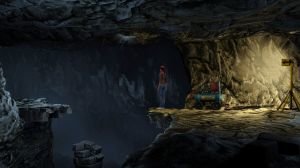 Steffen: The only thing Nina knows about him is that he is one of Max’s colleagues. The two of them had studied together and are now both working on a mysterious discovery which Max made at the legendary Potbelly Mountain in Turkey.
Steffen: The only thing Nina knows about him is that he is one of Max’s colleagues. The two of them had studied together and are now both working on a mysterious discovery which Max made at the legendary Potbelly Mountain in Turkey.
AG: A huge part of the appeal of events like Tunguska is that they can't be explained. In many ways, it's more fun to speculate than to know. What other phenomena fascinate you and your team? (Or would telling be tipping your hand for future Secret Files games?)
Steffen: There exist tons of such phenomena – Loch Ness, Area 51, the Bermuda Triangle, to name but a few. But with Secret Files we do not want to work with ideas that have been done to death. The theme should still have something fresh and new to offer.
AG: It's too bad you did the whole end-of-the-world thing in 2009. The Mayan calendar apocalypse "prediction" would have made for great Secret Files fodder in 2012.
Steffen: Even the latest instalment of Secret Files, which takes place in 2012, is about nothing less than the end of the world. So no need to worry.
AG: The first two games were co-created with Fusionsphere Systems, but now Animation Arts is going it alone. How were the responsibilities split up in the past, and why the decision to go solo now?
Steffen: Martin Mayer aka Fusionsphere Systems developed the engine behind Secret Files. But even despite the fact that he is no longer officially part of it – as he began to study after Secret Files 2 came out – he still supports and helps us when new features need to be embedded in the engine.
AG: You've brought a professional writing team on board for this game. Who is NEOS Film, and what are they contributing to the production?
 Steffen: The NEOS Film GmbH is a film production company based here in Munich. They approached us in 2009, looking for IPs which were suitable for a film adaptation. Back then we were searching for a professional author for Secret Files 3. Story, dramatic composition and character development were not really SF1 and 2’s strongest traits. So we got talking to NEOS, who had very good connections to professional writers for TV and cinema, and pitched three different stories. Our three authors, Stefan Holtz, Dirk Ahner and Florian Iwersen, are experienced in Crime Fiction, Comedy and of course Mystery, and have already received awards for their works. Together with NEOS's three film producers, we worked on the process and determined how to manage a fitting integration of tasks and riddles.
Steffen: The NEOS Film GmbH is a film production company based here in Munich. They approached us in 2009, looking for IPs which were suitable for a film adaptation. Back then we were searching for a professional author for Secret Files 3. Story, dramatic composition and character development were not really SF1 and 2’s strongest traits. So we got talking to NEOS, who had very good connections to professional writers for TV and cinema, and pitched three different stories. Our three authors, Stefan Holtz, Dirk Ahner and Florian Iwersen, are experienced in Crime Fiction, Comedy and of course Mystery, and have already received awards for their works. Together with NEOS's three film producers, we worked on the process and determined how to manage a fitting integration of tasks and riddles.
AG: Good writing is good writing, but it's much different writing for a movie than a game. Having a film team in charge of the story, how do you bridge that gap?
Steffen: It can be rather trying to balance so many different opinions. In addition, it was necessary to explain that certain things may be possible in a film but would not work in a game. Linearity, for example, works differently in a film. There the audience follows the story passively. There is a certain distance between them and the events that take place on the screen. But in a game, you can never fully anticipate the next move the player will make. Every possible action has to be taken into account and actions, dialogues etc. have to take this into consideration. Differences become apparent as well in terms of character logic and design: If a film dishes out impossible things, one might still overlook that with a smile. If a character is obnoxious the audience hates them (need I mention Jar Jar Binks, for example?). But this does not work in a game if I force the player to do something illogical or play as a completely unappealing character. All things considered, the discussions did cost us a lot of valuable production time. But I think it was worth it. Hopefully you can see for yourself how well we bridged the gap between film script and game story. ![]()
AG: Speaking of movies, you've always placed a much stronger emphasis on cinematic presentation (car chases, explosions, airplane dogfights, scaling moving trains, etc.) than many developers. By their nature, adventures are slow-paced and cerebral, but this kind of simulated action adds so much. Why do you think we don't see more of it in the genre?
Steffen: We think action, suspense and drama are important elements. After all, the players should not lose interest. With Lost Horizon we tried to do that with the typical mechanisms of an adventure game – which proved to be a pretty difficult task, because sleight of hand or action sequences, time pressure or even the on-screen death are not well liked among adventure-gamers. Lost Horizon, for example, had the car chase scene in Hong Kong, where one had to apply the laws of inertia in order to climb onto the lorry. Some might remember LucasArts’s Full Throttle. It had motor-bike battles and even a Demolition Derby which reeked of action sequences, but ultimately were all about careful thinking and the appliance of the right items. I cannot explain why such elements are so rarely used in games. The gamers approved of that in Lost Horizon, which is why we included such special tasks in Secret Files 3 as well (don’t worry, there are no mini-games or action sequences), because they provide a much needed diversion from the usual Look-At, Pick-Up, Combine.
AG: The Secret Files games have been known for some pretty bizarre (okay, I'll say it – illogical) puzzle solutions. Have you heard that criticism and taken it to heart at all?
Steffen: Of course. Logic was the highest commandment – only Nina’s dreams may differ slightly from this rule. Riddles and tasks should arise from the situation and story at hand so as not appear contrived. Story always came first during development; riddle design had to fit the story and not the other way around. Compare this to the scavenger hunt in SF2 or the Cellphone-Cat in SF1 and you hopefully see the difference.
AG: What else have you learned from previous experience that you're trying to incorporate into the new game? Or is it pretty much status quo at this point?
Steffen: We constantly follow the customers’ and the press’s feedback. We improve what they liked, we lose what they didn’t. We also come up with brand new ideas: For example, the main menu which every player can create individually by answering a few questions in a “psych-test”.
AG: Your last game wasn't a Secret Files adventure, but the equally entertaining Lost Horizon. Why the change of direction then, and why the switch back to Secret Files now?
Steffen: We needed some time out so as not to have SF3 become “just another Secret Files game”. Apart from that, Lost Horizon provided us with the opportunity to get away from logic restraints – something made possible by the theme “Shambala” and the time difference to the 1930s. Having hand-drawn backgrounds instead of rendered ones was also a nice change. Apparently we should not try that with Secret Files. The SF recipe for success seems to be “Crime + Mystery + realistic design + present day” – something also reflected in sales.
AG: Lost Horizon in particular hearkens back to the classic serial movie adventures of the 1930s and '40s. What were some of your other inspirations, either individually or collectively as a team?
Steffen: For the main part it appears to be a homage to “Indy”, who drew his inspiration from classical adventure films from that time.
AG: What about adventure games? Any classics that you pattern your games after, or seek to emulate in any way?
Steffen: Lost Horizon surely possesses its own originality. But elements from our favourite adventure games as well as Indiana Jones will of course find their way into the game. The classic Flight of the Amazon Queen should also be recognizable in LH. Just look at the screenshots below.

Flight of the Amazon Queen |
Lost Horizon |

AG: You're also working on a new episodic game called Columbus 4, correct? We know next-to-nothing about the game in the English-speaking world. What can you tell us about that?
Marco Zeugner: Columbus 4 is still in its early stages. The completion of Secret Files 3 was of course our priority. That is why detailed information of our next projects will be released this fall.
AG: Amidst the current crowd-funding frenzy, it's refreshing to see a conventional publisher-backed adventure game being produced and sold in stores. What's your relationship with Deep Silver been like?
Marco: Deep Silver proved to be a dependable and competent partner who always had a sympathetic ear for us developers during our work on our first adventure game Secret Files: Tunguska. That is why we successfully continued our collaboration from project to project. Crowd-funding is at first glance an interesting thing. But there are always two side to a coin. We are very comfortable in our current constellation and think the task sharing between us as developers and Deep Silver as publishers are well managed and work perfectly.
AG: Your previous Secret Files games have been ported to the Nintendo DS and Wii. Any chance of seeing the new game on the 3DS or any other platform?
Marco: We would love to do an adaptation for the 3DS. That would definitely be less problematic than the adaptation back then for the DS. We were forced to make some profound modifications because of the limited data medium capacity. For example, the complete omission of speech output. That would not be a problem with the 3DS. We even converted some of our locations to 3D and it looks very pretty. Sadly, the publisher has the final word when it comes to porting. And if they believe that there is no market for this then there won’t be a port.
AG: Secret Files 3 is still on track for release at the end of August, correct? So you're busy putting the finishing touches on it at this stage?
Steffen: The German version is scheduled for an August 31 release – in a nice box and as a Steam download. The English version should be done soon afterwards. Right now that depends on how long the voice recording will take.
AG: Well, we're certainly looking forward to playing the game when it's done, but thanks for taking a break during crunch time to join us.
Steffen: Actually, this was not really a break from crunch time. While answering your questions, I am in fact testing the Goldmaster. If the sales version really does have a bug somewhere it will be on your head. ![]()






